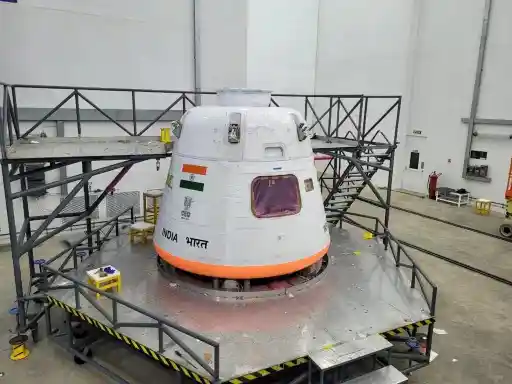India’s human spaceflight ambitions are set to take a big leap forward this December as ISRO readies the Gaganyaan-1 (G1) mission, the first in a series of uncrewed test flights aimed at paving the way for Indian astronauts in space.
Three Days in Orbit to Test Critical Systems
A senior ISRO official confirmed the spacecraft will spend about three days in low-Earth orbit, testing life support, navigation, re-entry, and other mission-critical systems. This will be the first real-world validation of the technology designed to safely send humans into space and bring them back.

Data for a Future Crewed Mission
Onboard sensors will record how the spacecraft handles launch stress, microgravity, space radiation, and atmospheric re-entry. The goal is to simulate every condition a future crew will face and ensure the systems perform flawlessly.
Drop Test Before Launch
Before the December mission, ISRO will conduct an integrated drop test of the crew module. Released from a set altitude, it will test the parachute-assisted landing system, refining recovery procedures ahead of the actual mission.
Astronaut Training Back on Track
The astronaut training programme is also regaining momentum. Group Captain Shubhanshu Shukla is set to return from advanced training with Axiom Space in the US. Training for all four crew members will resume in October at ISRO’s Human Space Flight Centre in Bengaluru, which is completing a new crew training simulator.
Simulator to Boost Preparedness
This state-of-the-art simulator will recreate launch, orbit, and re-entry conditions, giving astronauts realistic practice and improving mission readiness ahead of India’s first crewed flight.
A Step Toward Joining Elite Spacefaring Nations
If successful, G1 will be the final proof ISRO needs before sending Indian astronauts into space. It will mark a defining moment, putting India in the small group of nations capable of independent human spaceflight.
